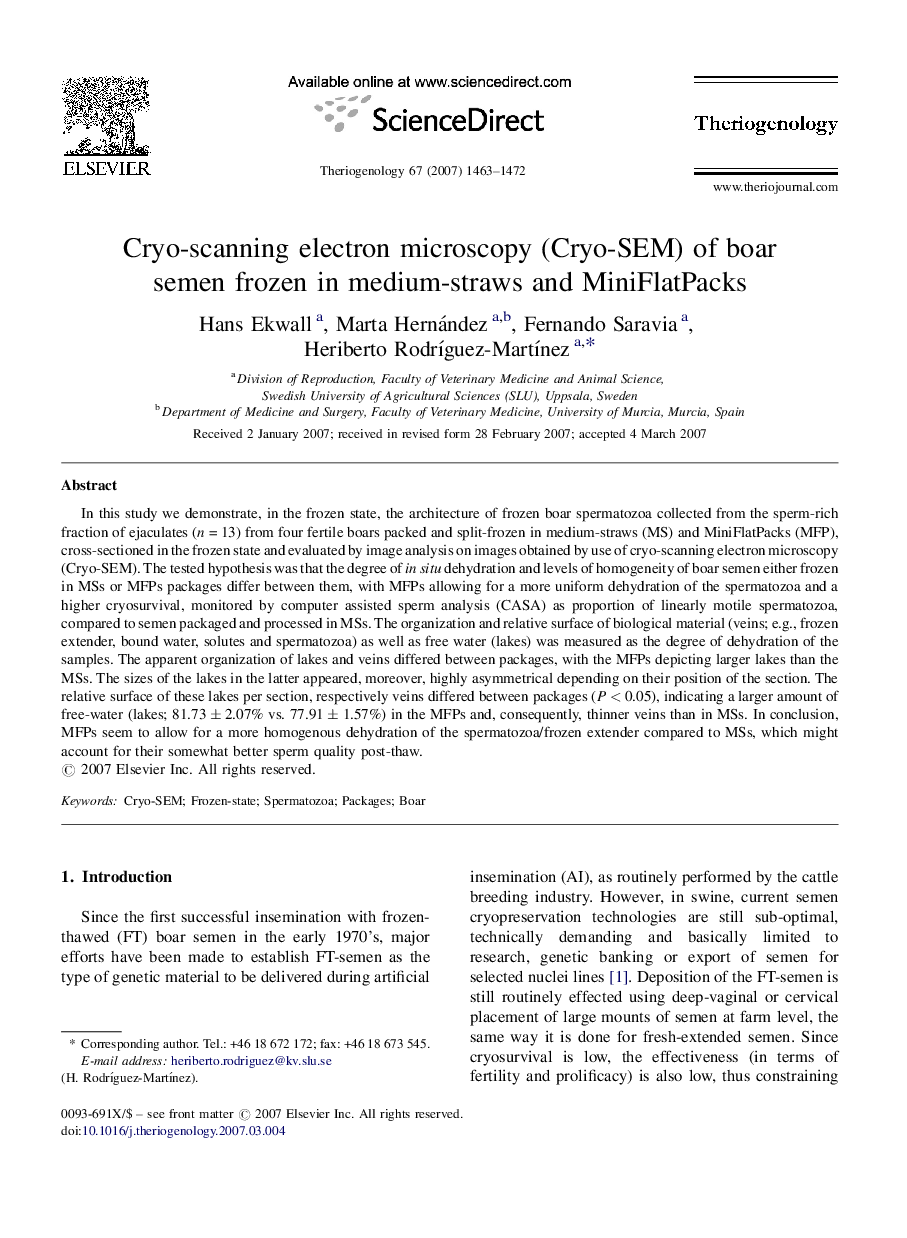| Article ID | Journal | Published Year | Pages | File Type |
|---|---|---|---|---|
| 2096597 | Theriogenology | 2007 | 10 Pages |
In this study we demonstrate, in the frozen state, the architecture of frozen boar spermatozoa collected from the sperm-rich fraction of ejaculates (n = 13) from four fertile boars packed and split-frozen in medium-straws (MS) and MiniFlatPacks (MFP), cross-sectioned in the frozen state and evaluated by image analysis on images obtained by use of cryo-scanning electron microscopy (Cryo-SEM). The tested hypothesis was that the degree of in situ dehydration and levels of homogeneity of boar semen either frozen in MSs or MFPs packages differ between them, with MFPs allowing for a more uniform dehydration of the spermatozoa and a higher cryosurvival, monitored by computer assisted sperm analysis (CASA) as proportion of linearly motile spermatozoa, compared to semen packaged and processed in MSs. The organization and relative surface of biological material (veins; e.g., frozen extender, bound water, solutes and spermatozoa) as well as free water (lakes) was measured as the degree of dehydration of the samples. The apparent organization of lakes and veins differed between packages, with the MFPs depicting larger lakes than the MSs. The sizes of the lakes in the latter appeared, moreover, highly asymmetrical depending on their position of the section. The relative surface of these lakes per section, respectively veins differed between packages (P < 0.05), indicating a larger amount of free-water (lakes; 81.73 ± 2.07% vs. 77.91 ± 1.57%) in the MFPs and, consequently, thinner veins than in MSs. In conclusion, MFPs seem to allow for a more homogenous dehydration of the spermatozoa/frozen extender compared to MSs, which might account for their somewhat better sperm quality post-thaw.
